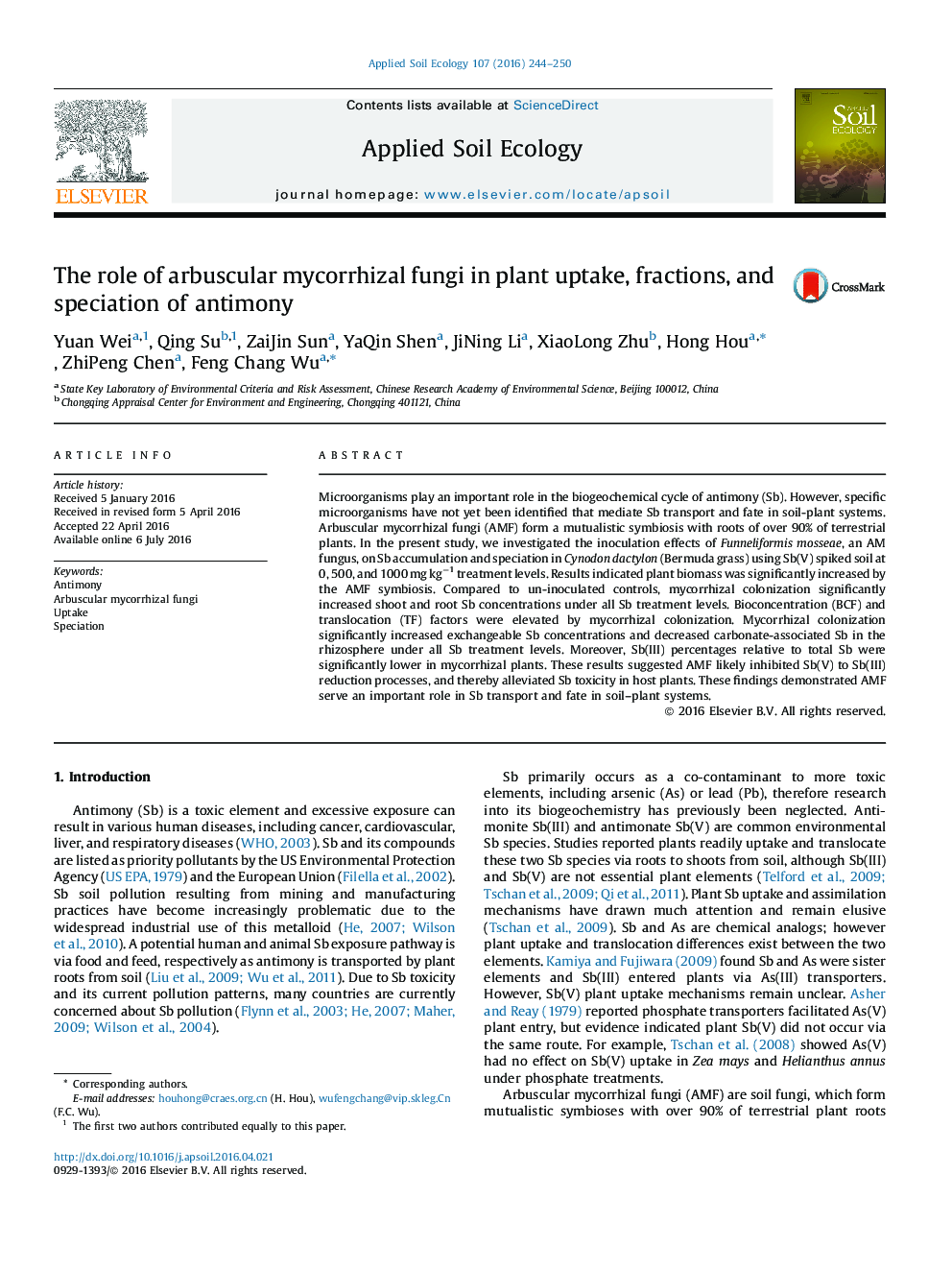| Article ID | Journal | Published Year | Pages | File Type |
|---|---|---|---|---|
| 6297634 | Applied Soil Ecology | 2016 | 7 Pages |
â¢Mycorrhizal colonization significantly increased plant Sb concentrations.â¢Mycorrhizal symbiosis could change the Sb form in the rhizosphere.â¢AMF are most likely to inhibit the reduction process of Sb(V) to Sb(III).
Microorganisms play an important role in the biogeochemical cycle of antimony (Sb). However, specific microorganisms have not yet been identified that mediate Sb transport and fate in soil-plant systems. Arbuscular mycorrhizal fungi (AMF) form a mutualistic symbiosis with roots of over 90% of terrestrial plants. In the present study, we investigated the inoculation effects of Funneliformis mosseae, an AM fungus, on Sb accumulation and speciation in Cynodon dactylon (Bermuda grass) using Sb(V) spiked soil at 0, 500, and 1000 mg kgâ1 treatment levels. Results indicated plant biomass was significantly increased by the AMF symbiosis. Compared to un-inoculated controls, mycorrhizal colonization significantly increased shoot and root Sb concentrations under all Sb treatment levels. Bioconcentration (BCF) and translocation (TF) factors were elevated by mycorrhizal colonization. Mycorrhizal colonization significantly increased exchangeable Sb concentrations and decreased carbonate-associated Sb in the rhizosphere under all Sb treatment levels. Moreover, Sb(III) percentages relative to total Sb were significantly lower in mycorrhizal plants. These results suggested AMF likely inhibited Sb(V) to Sb(III) reduction processes, and thereby alleviated Sb toxicity in host plants. These findings demonstrated AMF serve an important role in Sb transport and fate in soil-plant systems.
